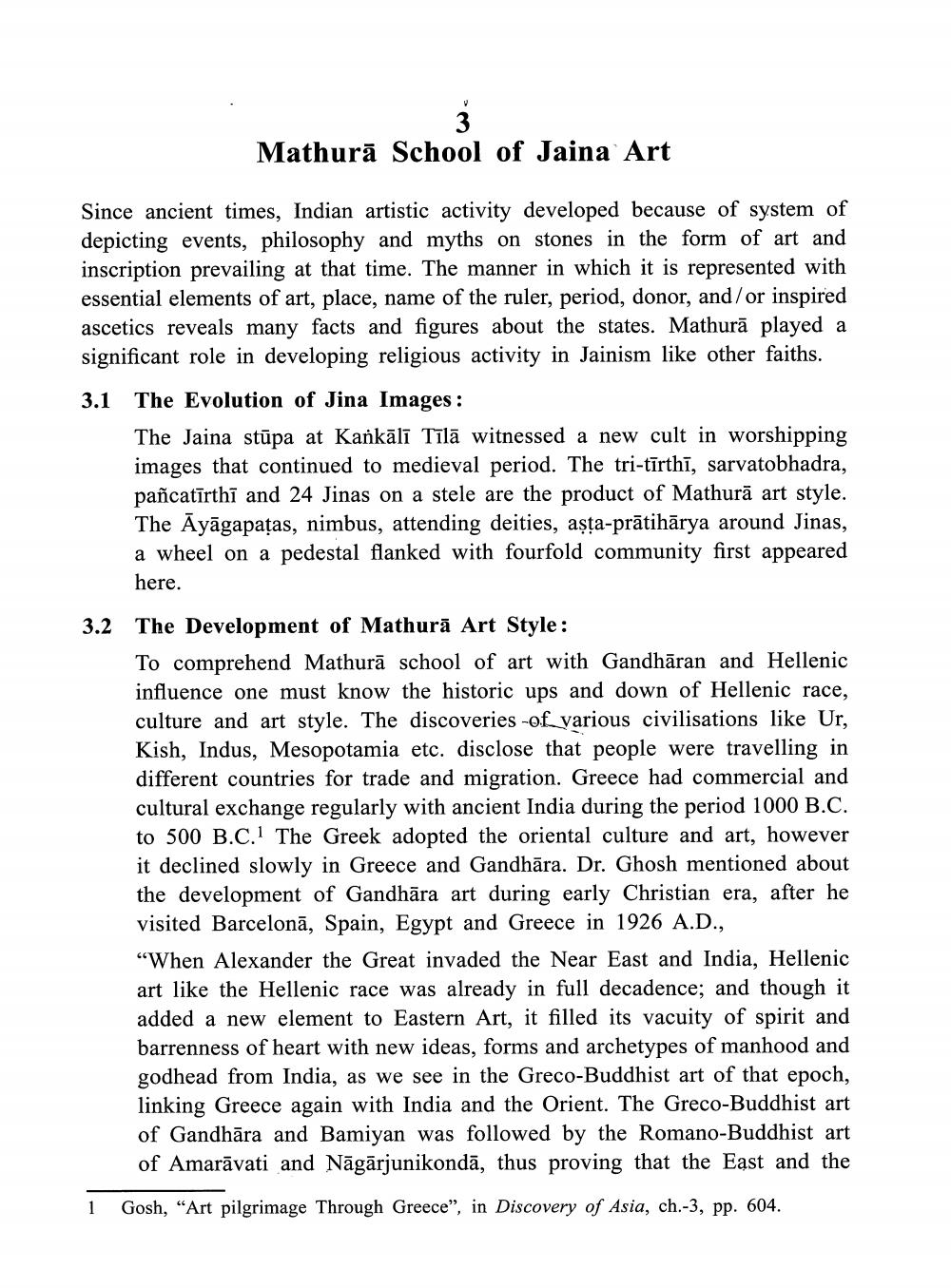________________
Mathurā School of Jaina Art
Since ancient times, Indian artistic activity developed because of system of depicting events, philosophy and myths on stones in the form of art and inscription prevailing at that time. The manner in which it is represented with essential elements of art, place, name of the ruler, period, donor, and/or inspired ascetics reveals many facts and figures about the states. Mathurā played a significant role in developing religious activity in Jainism like other faiths.
3.1
The Evolution of Jina Images : The Jaina stūpa at Kankālī Tīlā witnessed a new cult in worshipping images that continued to medieval period. The tri-tīrthī, sarvatobhadra, pañcatīrths and 24 Jinas on a stele are the product of Mathurā art style The Āyāgapatas, nimbus, attending deities, asta-prātihārya around Jinas, a wheel on a pedestal flanked with fourfold community first appeared here.
3.2 The Development of Mathurā Art Style:
To comprehend Mathurā school of art with Gandhāran and Hellenic influence one must know the historic ups and down of Hellenic race, culture and art style. The discoveries -of various civilisations like Ur, Kish, Indus, Mesopotamia etc. disclose that people were travelling in different countries for trade and migration. Greece had commercial and cultural exchange regularly with ancient India during the period 1000 B.C. to 500 B.C.1 The Greek adopted the oriental culture and art, however it declined slowly in Greece and Gandhāra. Dr. Ghosh mentioned about the development of Gandhāra art during early Christian era, after he visited Barcelonā, Spain, Egypt and Greece in 1926 A.D., “When Alexander the Great invaded the Near East and India, Hellenic art like the Hellenic race was already in full decadence; and though it added a new element to Eastern Art, it filled its vacuity of spirit and barrenness of heart with new ideas, forms and archetypes of manhood and godhead from India, as we see in the Greco-Buddhist art of that epoch, linking Greece again with India and the Orient. The Greco-Buddhist art of Gandhāra and Bamiyan was followed by the Romano-Buddhist art of Amarāvati and Nāgārjunikondā, thus proving that the East and the
1
Gosh, "Art pilgrimage Through Greece", in Discovery of Asia, ch.-3, pp. 604.




